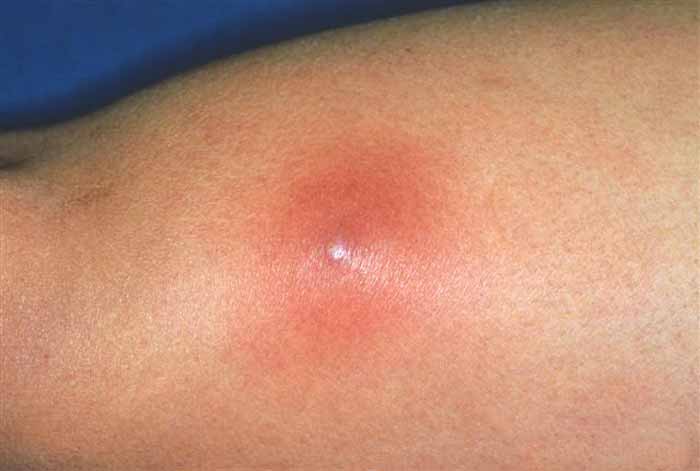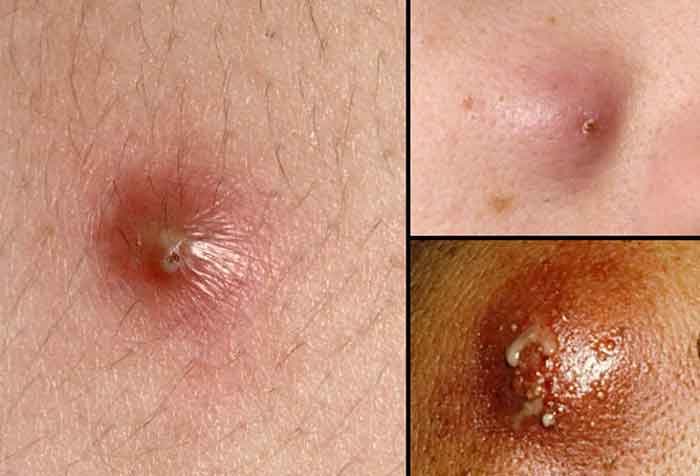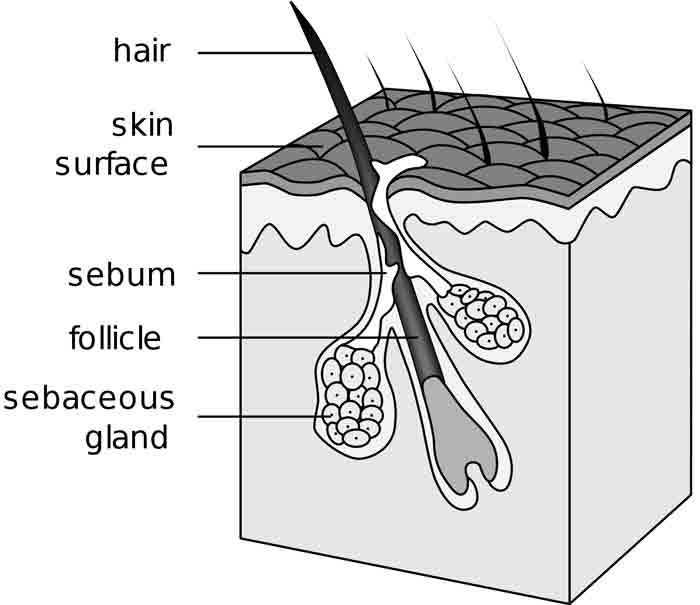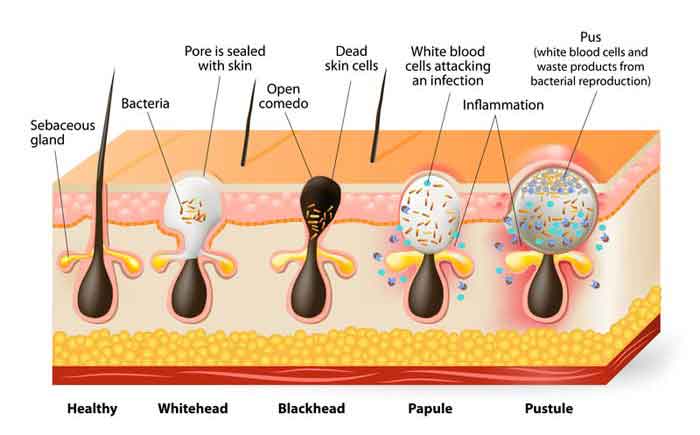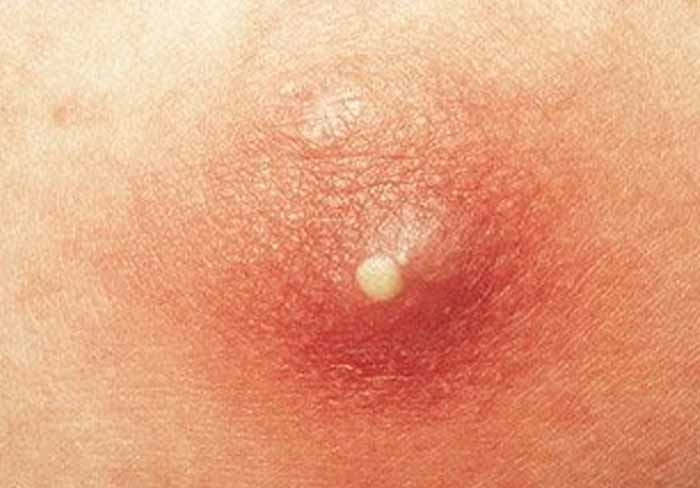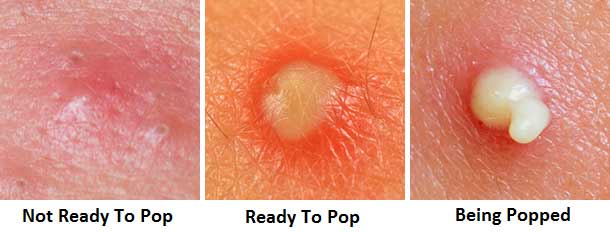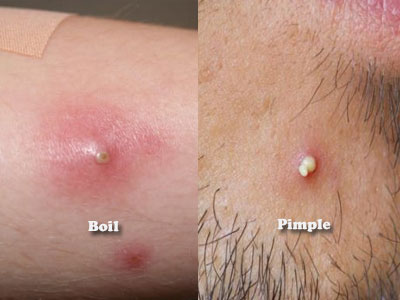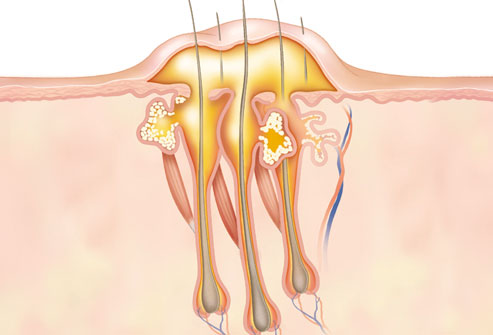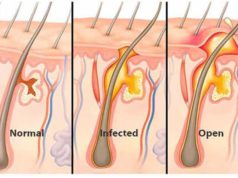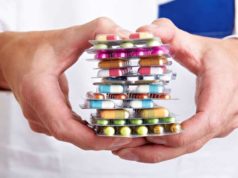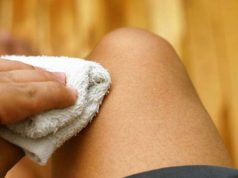If you have been having a tough time to know what is what when it comes to boil vs pimple, this article is for you. Learn what these two always confused conditions are, the differences with pictures as well as similarities
Boil + Pictures
A boil or skin abscess is an infection that begins in a hair follicle or oil gland.
It can also be described as is a collection of pus that forms in the skin
In the beginning, the skin turns red at the area of infection then it gets tender and the lump thereafter develops.
After about seven days, the lump starts turning white as pus collects under the skin. It can occur on the face, neck, armpits, shoulders and the buttocks.[1]
In terms of size, skin abscess are normally pea-sized, but can grow as big as a golf ball
Signs and symptoms
- Reddened bump on skin that is normally firm
- Tender, swollen skin surrounding the bump painful to touch
- A white or yellow centre or tip
- Weeping, draining, oozing or crusting
Pimple + Pictures
A pimple is a small skin lesion or inflammation of the skin. It develops when the sebaceous glands get blocked and infected, leading to swollen, red lesions filled with pus.
The growth of pimples is normally connected to oil production, dead skin cells, clogged pores and bacteria, although at times yeast could also contribute to this.[2]
On the other hand, sebaceous glands may become very overactive due to hormone dysregulation and thereafter lead to the development of the pimples on various parts of your body. They will manifest in different colors depending on the underlying cause.
Symptoms and signs of pimples
There are different types of the pimples that can manifest. They include:
- Blackheads: they form on the skin’s surface and they are open at the top. They are visible dirt and skin cells inside the pore that make them appear black.
- Cysts: they are large, soft and are filled with pus.
- Nodules: they are hard lumps that form deep inside the skin.
- Papules: they are larger, hard pink or red bumps that can feel sore when they are touched.
- Pustules: they are red, inflamed bumps that are filled with pus
- White heads: they form deeper in the skin. They are closed at the top and are filled with pus, which makes them look white. Pus in them is a thick mixture of white blood cells and bacteria.
Pictures of a Pimple
Boil vs. Pimple- Differences
Boils, which are also called furuncles or abscesses are infected hair follicles that are caused by the bacteria mainly the staphylococcus aureus that leads to painful swellings. Other strains of bacteria and fungi could also be the cause.
On the other hand, a pimple is not necessarily caused by an infection. Rather, it is as a result of the clogging of the pores by a plug of oil and dead skin. The pore may get irritate and then inflame to have a red color.
Pimples appear in different sizes, shapes and types. They often form on the face although you can get them on your neck, back, shoulders and even chest.
A boil on the hand is a red bump that is swollen and red both inside and outside. It is gets filled with pus with time then gets larger. Boils mainly occur on the areas that you sweat most and where clothes rub against your skin, like the face, neck, underarms, buttocks and the thighs.
Several boils can cluster then form a growth that is termed as a carbuncle.
A boil is normally very painful and it can leave a permanent scar. The carbuncles cause flu-like symptoms like fatigue, fever and chills.
You are likely to link the occurrence of pimple to your teenage years. However, the truth is that, you can get them at any time of your life. For women, you will be at the highest risk if you have changes in hormones, such as during puberty and pregnancy or when you start or stop the use of birth control pills.
Generally, an increase in the amount of male hormones in both males and females is likely to put you at the highest risk of getting pimples.
The following factors can also put you at a risk of getting pimples:
- Being under stress
- Eating certain foods, including dairy and high-carb foods
- Having parents who had acne, which tends to run in families
- Taking anti-inflammatory medication, anti-seizure drugs, or lithium
- Using cosmetic products that clog pores, which are considered comedogenic[3]
Boils can affect anyone. It is however commonest among the teens, especially the males. There are risk factors that could put you at a higher risk and they include:
- Having a weakened immune system
- Having diabetes, which makes you more vulnerable to infections
- Having eczema
- Sharing towels, razors, or other personal hygiene items with someone who has a boil
- Having pimples also could pre-expose you to boils
For the case of pimples, you should seek medical advice when:
- You have a lot of pimples
- Over-the-counter treatments aren’t working
- You are unhappy or uncomfortable with the way you look, or the pimples are affecting your self-esteem
For the case of boils, you should seek medical attention when the boil:
- Is on your face or spine
- Is very painful
- Is bigger than 2 inches across
- Causes a fever
- Doesn’t heal within a couple of weeks, or keeps coming back
Pimples can be treated using over the counter medications like creams or washes obtainable from pharmacies. The drugs contain ingredients like salicylic acid and benzoyl peroxide which prevent the pores from getting clogged and also kill bacteria on your skin. A doctor can also prescribe stronger medications like antibiotics to kill bacteria, birth control pills to adjust the hormones and isotretinon a form of vitamin A.
Boils on the contrary can be treated at home by applying a warm compress, wet washcloth. This eventually makes the pus to drain out and cause the boil to shrink.
For larger boils, your doctor can cut a small hole and then drain the pus. Antibiotics can also be prescribed to treat the infection. Never try to cut a hole yourself because this will lead to more infections and formation of a scar tissue.[4]
In order to avoid being a victim of pimples,
- Ensure that you wash your face twice a day with a mild cleanser. This is because keeping your skin clean will prevent oil and bacteria from building up inside your pores. Be cautious that you do not to over-wash your skin, which can cause your skin to dry out and produce more oil to compensate.
- Having done that, choose oil-free or non-comedogenic skin care products and makeup. These products will not clog your pores.
- Limit your use of helmets, headbands, and other accessories that press against your skin for a long period of time. These products can irritate your skin and cause pimples.
- Wash your hair often. Oil that builds up in your scalp can contribute to breakouts.
To prevent the onset and occurrence of boils:
- Clean and cover open sores to prevent bacteria from getting inside and causing an infection.
- Never pick or pop a boil you already have. You could spread the bacteria.
- Never share personal hygiene items like razors, towels, and clothes. Unlike pimples, boils are contagious. You can catch them from someone who is infected.
- Wash your hands with warm water and soap throughout the day to avoid transferring bacteria to your skin.[5]
Boil or Pimple? Similarities
One key similarity is that these two are common skin conditions. They are both raised from the skin and are reddish in color. They may also have similarity in terms of the symptoms. This in most cases would confuse you if you are not well acquainted with marking out the differences.
The other thing is that both of them can be caused by bacteria. It is only that the pimples involve the bacteria clogging the pores but boils involve the bacteria colonizing the skin tissue. This makes them be treatable by the use of antibiotics.[6]
Sources and References
[1] http://www.webmd.com/skin-problems-and-treatments/guide/boils#1
[2] http://www.medicalnewstoday.com/articles/71702.php
[3] https://www.verywell.com/difference-between-a-pimple-and-a-boil-15613
[4] http://www.differencebetween.info/difference-between-acne-and-boils
[5] http://www.healthline.com/health/boil-vs-pimple#prevention8
[6] https://pimplesremedyideas.com/boil-vs-pimple/

